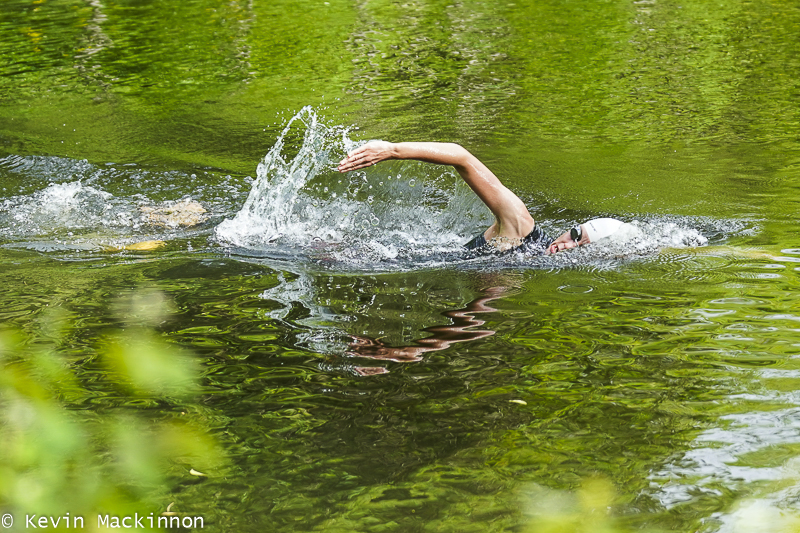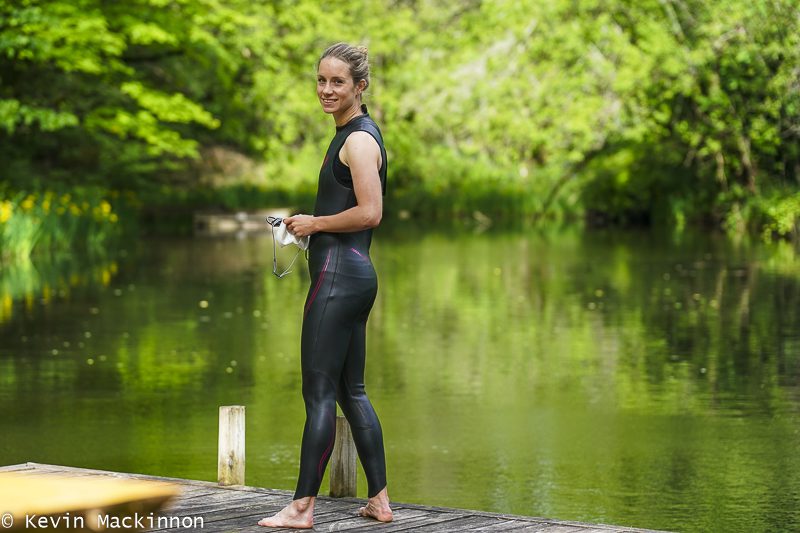Easy open-water workouts to keep swimming fun and improve your fitness
How to add some structure and variety into your open water swim workouts
 Photo by:
Kevin Mackinnon
Photo by:
Kevin Mackinnon
What do you mean there’s no lane lines?
It is estimated that there are over 300,000 lakes in Canada with a surface of greater than three square kilometres, and over 2 million (yes, that’s right, million) lakes in total. That’s a lot of places to go open water swimming, and that’s not even counting the three oceans along our borders.
This is a great thing for triathletes in Canada as, for many, open water in the only place we’ve been able to swim for months. Even as pools in many parts of the country are opening again, the restrictions in place often mean that open water swimming continues to be the best training option.
However, there are also challenges to getting in a great workout when swimming in the open water. Gone are the lane lines, pace clock and gear waiting for us on deck. For the first couple of weeks, maybe even months, this might have felt like a relief, but by now some of us may feel that our routine open water swims are becoming a bit stale.
Here are a few ways to spice up that open water swimming to make it exciting again, and to carry you through to the end of the outdoor swimming season.

The first tip to adding more variety and training stimulus into your open water swims is to start your swim with a firm plan. A long, ambling easy swim is great, but shouldn’t be the only thing you do, or your fitness progress will stall. Without the lane lines and pace clock you will need to be a little more creative about how you create this structure. One option is to use physical markers. Buoys in a marked-off swim area are great waypoints, as are bends in a shoreline or even remarkable features on the shoreline, such as large rocks or unusual trees. Use these markers to create a course for yourself. You could swim at a steady pace to the first one, then hard to the second then alternate. Or use a series of three markers as signal points to increase your speed and then swim easy all the way back to the start. Mix it up.
Another option is to use a stroke-count approach. You could cycle through alternating 10-20 hard strokes with 20-40 easy strokes. Play around with the number – more strokes hard in a row to simulate longer intervals, fewer hard strokes in a row with longer easy stretches if you want to work on top speed.
A final approach that works well if you have a swim watch with a repeat timer function is to use time to regulate your intervals. Alternating 1-2 mins easy with 1-2 mins strong can be a great set if you keep it up for 10-20 minutes. Depending on the capabilities of your watch, you could program in more complicated intervals with variable work and rest intervals. Just make sure it has a vibrate function as hearing an audio alarm can be hard in the water.
You can also mix and match these approaches in one workout. For example, you could swim along a series of 5-10 markers or buoys, doing 10-20 hard strokes after each one, and then later in the workout do a set based on timed intervals.
Try a few of these approaches out in your local swimming spot and figure out what works for you. Then you can create planned workouts to keep your open water swimming exciting all the way until the snow comes!
Darian Silk is a triathlon coach and Certified Exercise Physiologist based in Toronto. Read more about Darian at www.teamatomica.com or email him at darian@teamatomica.com.
